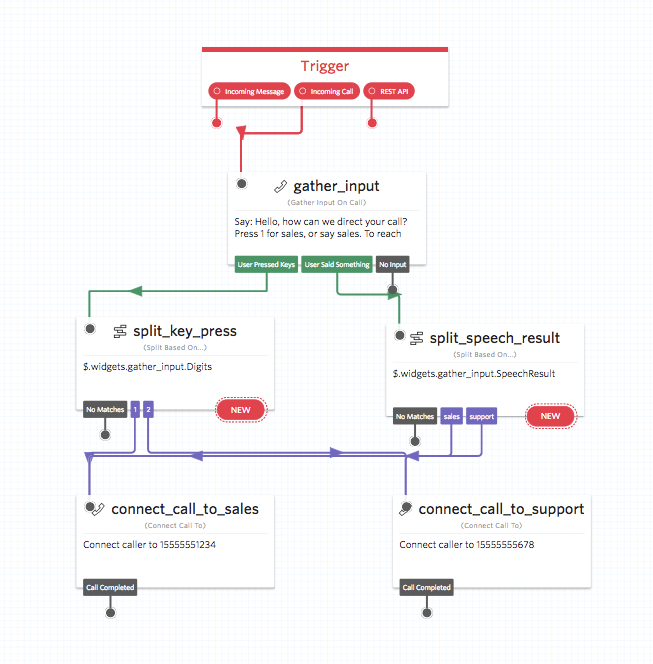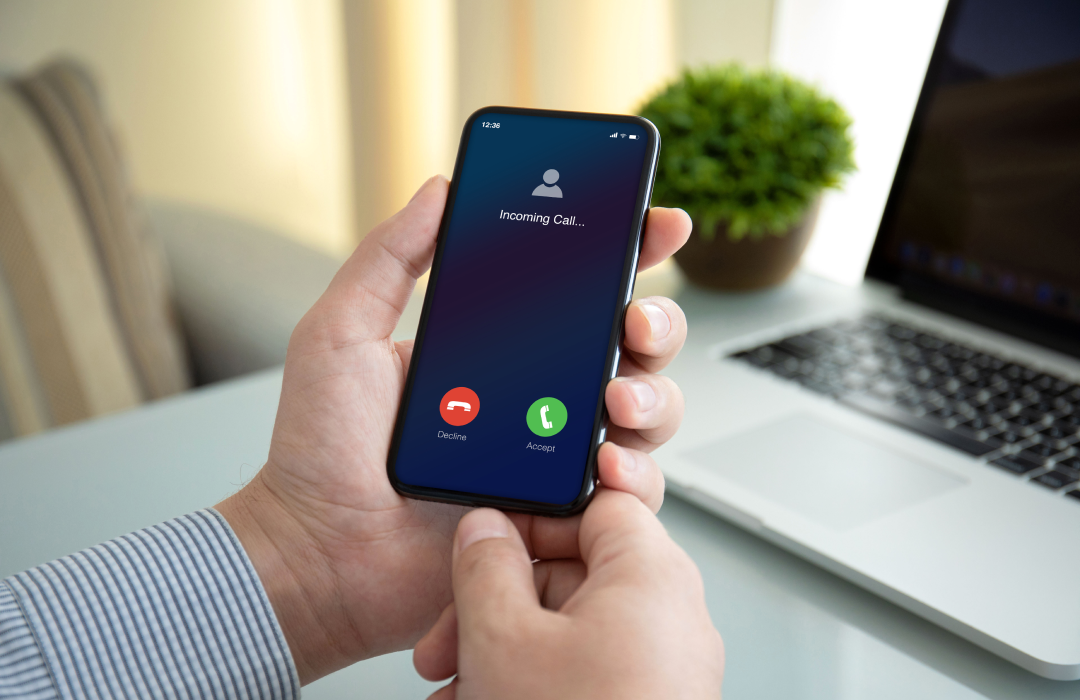What is IVR? An overview of benefits and best practices for call centers

Time to read: 8 minutes
IVR for call centers: Top benefits and best practices
Many of us dread calling a call center, daunted by the prospect of long queues and frustrating holds. But interactive voice response (IVR) technology removes a great deal of those grievances, enabling contact centers to give callers a streamlined, personalized experience.
Thanks to innovations like IVR, call centers will no longer have a poor reputation. Instead, contact centers can be a valuable customer resource, all while helping businesses save money and provide better customer engagement. IVR is a game changer—there’s no doubt about it.
Let’s discuss everything you need to know about what IVR is, how it works, benefits for businesses, and best practices for success.
What is IVR?
IVR is the technology that allows call centers to route calls based on customers’ spoken responses or touch-tone input. These systems use automated menus to categorize and group inbound callers and connect them to self-service options or call center agents.
In traditional call centers without IVR, agents manually routed and connected incoming calls, often leading to long wait times and queues that frustrated customers and businesses alike. Today, IVR systems help eliminate those problems by replacing the traditional switchboard operator with an automated call routing process that lets customers direct themselves to the support they need.
Learn more about related systems, like interactive virtual assistants and automatic call distribution.
How does IVR work?
IVR combines existing physical phone systems with Voice Over Internet Protocol technology to create a call routing system. In doing so, IVR software supports this system with automated menus that direct calls to the appropriate departments, live agents, or databases based on the caller’s selections.
For example, say there’s a cold snap in your city, and you need to contact your property manager regarding frozen pipes in your apartment building. Because the complex has many residents, the maintenance hotline uses IVR to prioritize issues and get residents the help they need as quickly as possible.
When you call in, the IVR system directs you to dial 1 if your maintenance issue is an emergency or dial 2 if it’s not urgent. If you dial 2 for nonemergencies, it directs you to leave a voicemail with your contact information and issue. But if you dial 1, it connects you to a live agent in the management office. As simple as this IVR system is, it makes all the difference in organizing maintenance requests and retaining good response times.
Automated IVR menus typically use voice recognition software or dual-tone multi-frequency touch-tone keypads to receive and interpret customer input and automated call distribution software to direct calls to agents.
What is an IVR menu?
An IVR menu is the phone system that greets customers when they call a company. It allows callers to interact with a company's phone system through keypad inputs or voice commands. This system enables businesses to automate the handling of incoming calls, guiding callers through a pre-recorded menu to self-service options or directing them to the appropriate live agent or department. For example, customers can choose what language they want to hear and also do things like check balances, make payments, or confirm appointments without talking to anyone.
Businesses create their own IVR call menus that fit their services. The IVR system works 24/7, so customers can get help any time, even if it's outside business hours.
5 benefits of IVR
IVR call center systems can help businesses improve the customer experience by providing a seamless routing infrastructure to efficiently connect customers with the resources they need. This technology allows contact centers to connect calls quickly, saving businesses and customers time while improving customer relationships.
Let’s take a closer look at the top benefits of IVR for businesses.
1. Cost-effective
A well-executed IVR system can be the key to running a more cost-effective contact center and increasing your business’ revenue. As we found in our Playbook for a Modern IVR:
Positive communication experiences can lead 67% of customers to give more business to a company.
The cost of resolving a customer need with IVR can be 48x lower than resolving it with a live agent.
Additionally, IVR automation can help improve lead conversion by getting qualified leads to your sales team faster.
2. Improve first contact resolution
IVR can significantly improve first contact resolution. By gathering basic information through the menu, IVR prepares agents to handle the issue, reducing the need for repeated explanations. Efficient routing ensures IVR directs calls to the right department or agent quickly, ensuring customers reach someone who can address their specific issue in the first phone call.
Customers can also resolve simple issues themselves using options in the IVR menu. By improving first contact resolution, IVR systems enhance customer satisfaction and reduce the workload on call center agents.
3. Scalable and straightforward to implement
IVR-enabled contact centers are more flexible and scalable without the physical constraints of traditional call centers. With an agile cloud-based solution, you can quickly create and update IVR menus and workflows as needed.
And you don’t even have to be a developer to get started—Twilio Studio provides a powerful drag-and-drop builder to help you create and adjust custom workflows and processes in your IVR system, no coding required.

4. Access to data and analytics
Software-based solutions like IVR enable you to track call data and contact center metrics—like customer satisfaction score, call abandonment rate, and service level agreement metrics—from a single dashboard. This data is crucial for measuring the performance of your contact center and agents.
Additionally, if you integrate IVR with your omnichannel contact center, agents can access customer data quickly. This gives them the necessary context for every customer interaction, allowing your agents to give callers more personalized and efficient service.
5. Flexibility to build innovative solutions
Modern IVR systems can do more than direct callers to press 0 to speak to an agent. When implemented thoughtfully, IVR allows customers to find the resources they need quickly and easily. Long holds to hear the status of an order or prescription should be a thing of the past, as should waiting in endless queues just to get redirected to a new department.
IVR systems are more innovative than ever and can help you provide agile solutions for the diverse problems businesses face today. Let’s look at an example of an innovative use of IVR:
In a case of pandemic ingenuity, developers Amber Case and Ben Greenstein created a choose-your-own-vacation IVR solution to help fill people’s need for travel. They created an immersive audio experience for callers using an IVR phone tree model. When they called in, the IVR dropped callers off in the middle of an (imaginary) highway, where they chose every step of the way by dialing numbers corresponding to menu options. Learn how the developers built it by checking out their core files in Twilio CodeExchange.
9 call center IVR best practices
Follow these IVR best practices to give customers the best possible experience when they call your call center.
1. Use a human-sounding voice.
Customers may associate an outdated robotic voice with a poor IVR experience, so make a strong first impression with a human-sounding voice. You can achieve this with professional voice-over recording or sophisticated text-to-speech technology.
2. Keep the main IVR menu simple.
The main menu sets the tone for the customer’s experience. Keep it short—under 30 seconds—with clear options to help direct the caller to the right agent or resource quickly.
3. Make it easy to reach a live agent.
You may offer self-service options in your IVR menu, but some callers know they need to connect to a live agent to resolve a complex issue. Don’t make them go deep into your IVR menu to do so—this will only lead to frustration. Instead, offer callers the option to connect directly to a live agent in the main menu.
4. Offer multiple languages.
Language options are crucial to meet the needs of your typical callers. For example, in the US, it’s common for call centers to offer support in English and Spanish. If you have customers from all over the world, expand your language offerings accordingly. And be sure to carry their language selection throughout the entire call, routing the caller to resources and agents in their preferred language.
5. Give the caller an accurate wait time.
It’s easier for callers to be patient if they know how long they can expect to wait. When they reach the queue, let the caller know their position in the queue or how long their wait will be. And if it’s a long wait, update them on their queue position at regular intervals or consider offering a call-back option.
6. Use the wait time wisely.
Ideally, the wait time for callers in the queue should be relatively short. But you can use this window to promote additional communication channels, like email or a chatbot on your website, or highlight a current promotion. This information would overwhelm callers if you shared it in the main menu, but it’s less intrusive to play it while callers wait to connect to an agent.
7. Don’t forget about the hold music.
Similar to a robotic voice, low-quality hold music can reinforce callers’ negative connotations of IVR. Make the hold music pleasant and high quality to create a positive experience for the caller. Sometimes, the little things matter!
8. Integrate IVR with your omnichannel engagement strategy.
An omnichannel contact center enables agents to engage customers on multiple channels from a single platform and provide personalized support without asking repetitive questions. Integrate your IVR call center with the rest of your channels to provide a seamless customer experience, ensuring the context of a call carries to other channels and vice versa.
9. Review the IVR menu regularly.
A regular cadence to review the IVR menu helps you remove outdated messaging. For example, if you launched a new website three years ago and have been promoting it during the wait time message ever since, it’s probably time to remove that information. Keeping your IVR messages and menu up to date will help generate trust with callers.
Want to see more IVR design best practices in action? Check out how Flix implemented conversational IVR with Twilio to improve the customer experience and reduce the workload for contact center agents.
Build a call center IVR system with Twilio
Modern IVR systems should be straightforward to build, deploy, scale, and iterate—as long as you have the right tools. We’re here to help. Twilio’s IVR APIs help you build custom workflows and solutions you can ship in a matter of days and continually adapt as needed.
Whether you’re new to coding or are a developer by trade, you can create intelligent solutions with Twilio Studio using a drag-and-drop interface that allows you to build without code and Twilio CodeExchange, which provides coding samples to help you get started.
Then, when you’re ready to build, we have you covered with thorough tutorials on how to build a phone tree and a call screening and recording system.
The next step is to integrate your IVR system with the rest of your contact center channels. That’s where Twilio Flex comes in. This fully programmable digital engagement center enables you to orchestrate and integrate channels to provide a seamless customer experience.
With full control over how you communicate with customers across channels, you can remove friction and drive customer loyalty. Check out an interactive demo to discover everything you can build with Flex.
Related Posts
Related Resources
Twilio Docs
From APIs to SDKs to sample apps
API reference documentation, SDKs, helper libraries, quickstarts, and tutorials for your language and platform.
Resource Center
The latest ebooks, industry reports, and webinars
Learn from customer engagement experts to improve your own communication.
Ahoy
Twilio's developer community hub
Best practices, code samples, and inspiration to build communications and digital engagement experiences.


